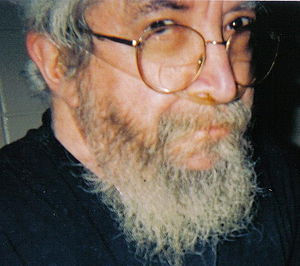LEOPARD syndrome
| Noonan syndrome with multiple lentigines (NSML) | |
|---|---|
 |
|
| Three-quarter facial view, first-generation patient showing slight prognathism and low set ears. | |
| Classification and external resources | |
| OMIM | 151100 164757 164760 176876 611554 |
| DiseasesDB | 7387 |
| MedlinePlus | 001473 |
| eMedicine | article/1096445 |
| MeSH | C05.660.207.525 |
| GeneReviews | |
Noonan syndrome with multiple lentigines (NSML) (also known as LEOPARD syndrome, cardiocutaneous syndrome, Gorlin syndrome II, lentiginosis profusa syndrome, progressive cardiomyopathic lentiginosis,Capute-Rimoin-Konigsmark-Esterly-Richardson syndrome, or Moynahan syndrome), which is part of a group called Ras/MAPK pathway syndromes, is a rare autosomal dominant, multisystem disease caused by a mutation in the protein tyrosine phosphatase, non-receptor type 11 gene (PTPN11). The disease is a complex of features, mostly involving the skin, skeletal and cardiovascular systems, which may or may not be present in all patients. The nature of how the mutation causes each of the condition's symptoms is not well known; however, research is ongoing. It is a RASopathy.
Noonan syndrome with multiple lentigines is caused by a different missense mutation of the same gene. Noonan syndrome is fairly common (1:1,000 to 1:2,500 live births), and neurofibromatosis 1 (which was once thought to be related to NSML) is also common (1:3500); however, no epidemiological data exists for NSML.
An alternative name of the condition, LEOPARD syndrome, is a mnemonic, originally coined in 1969, as the condition is characterized by some of the following seven conditions, the first letters of which spell LEOPARD, along with the characteristic "freckling" of the skin, caused by the lentigines that is reminiscent of the large cat.
The presence of all of these hallmarks is not needed for a diagnosis. A clinical diagnosis is considered made when, with lentigines present there are 2 other symptoms observed, such as ECG abnormalities and ocular hypertelorism, or without lentigines, 3 of the above conditions are present, with a first-degree relative (i.e. parent, child, sibling) with a clinical diagnosis.
...
Wikipedia
